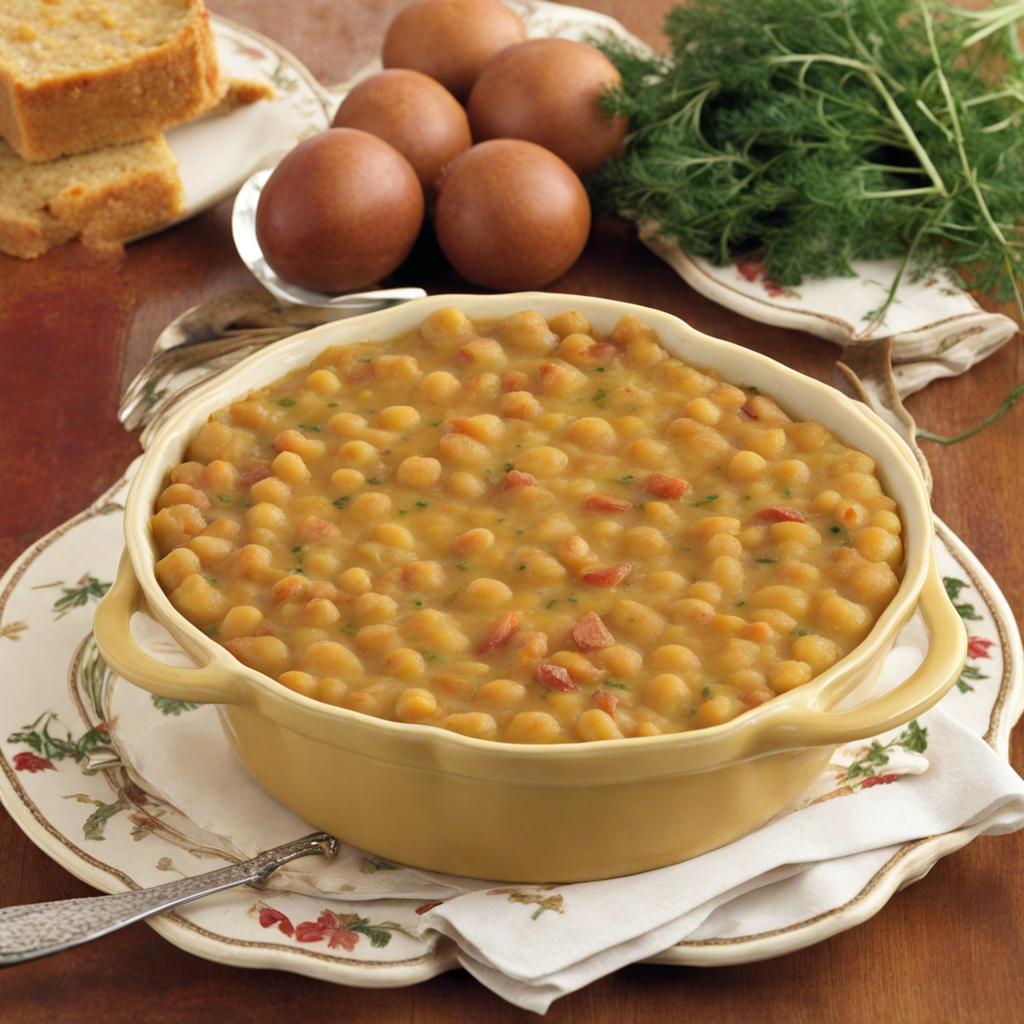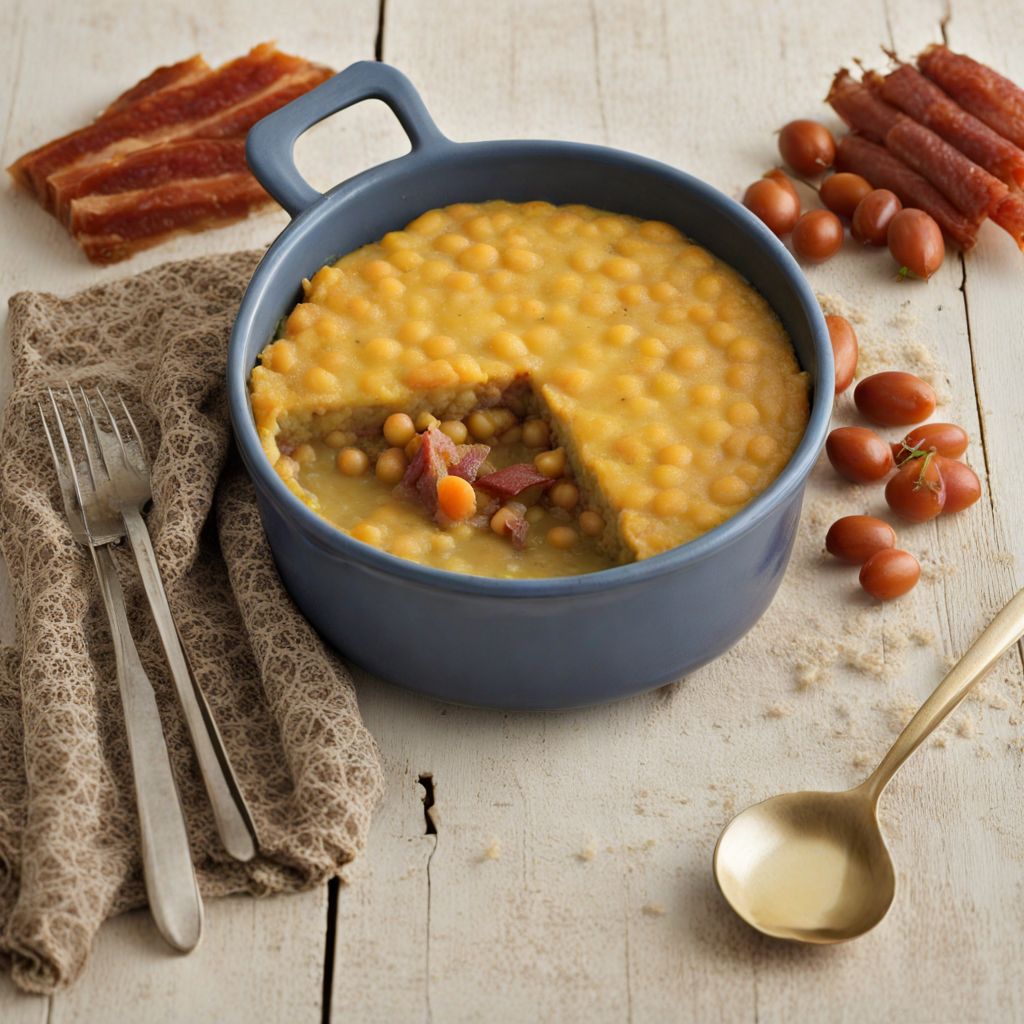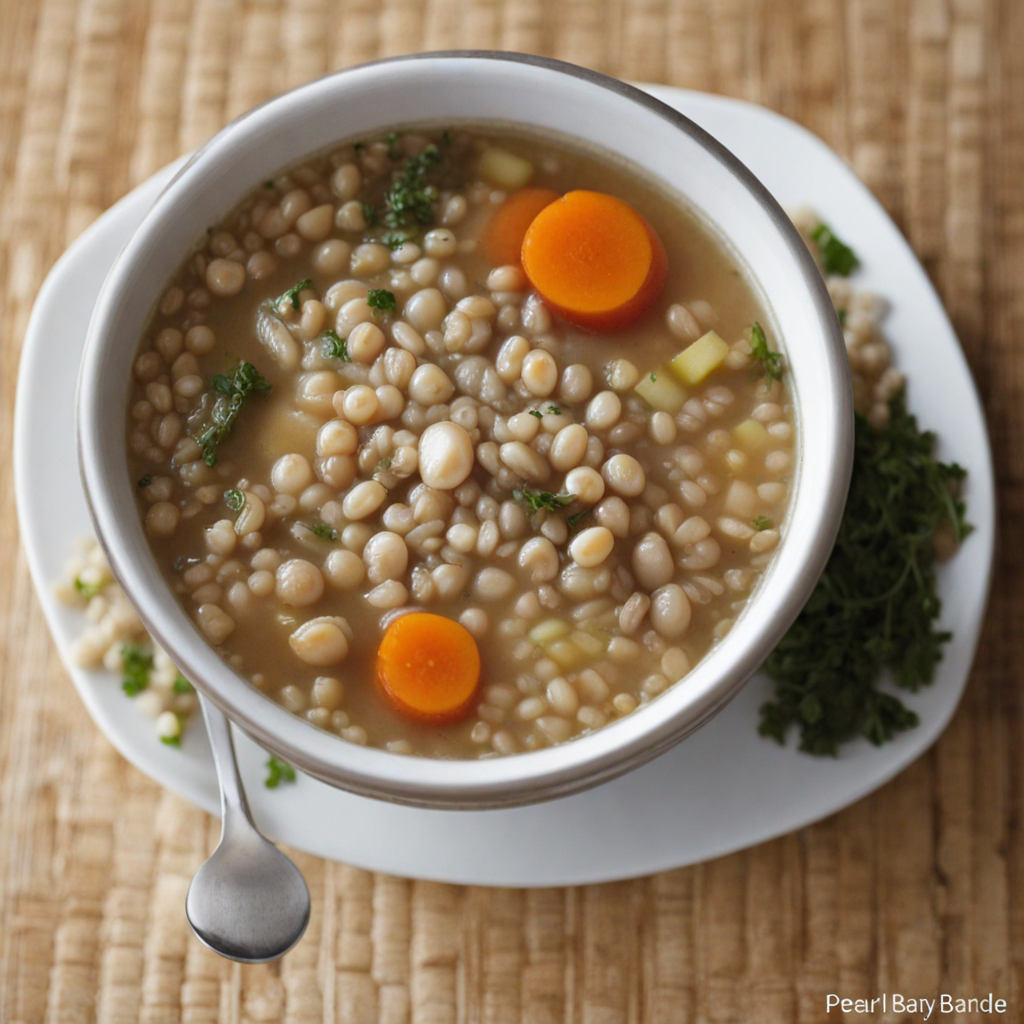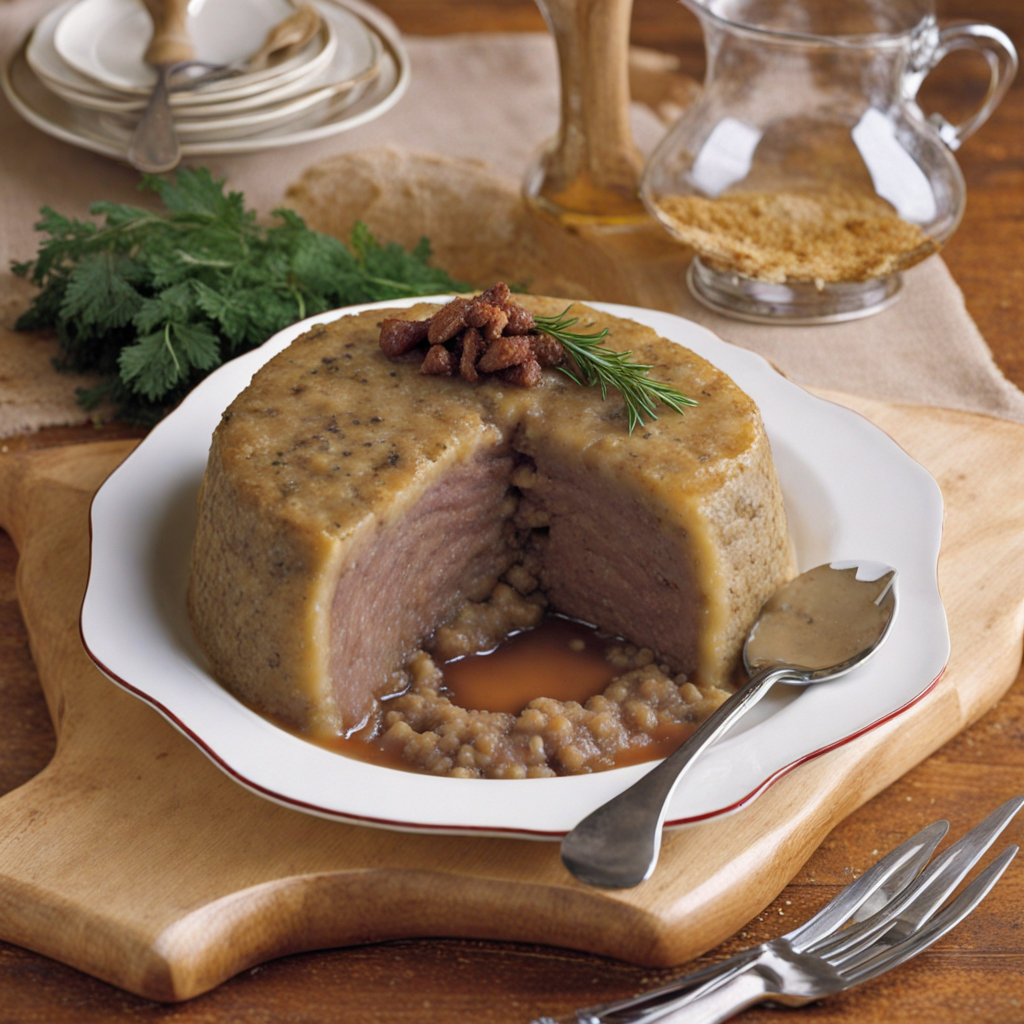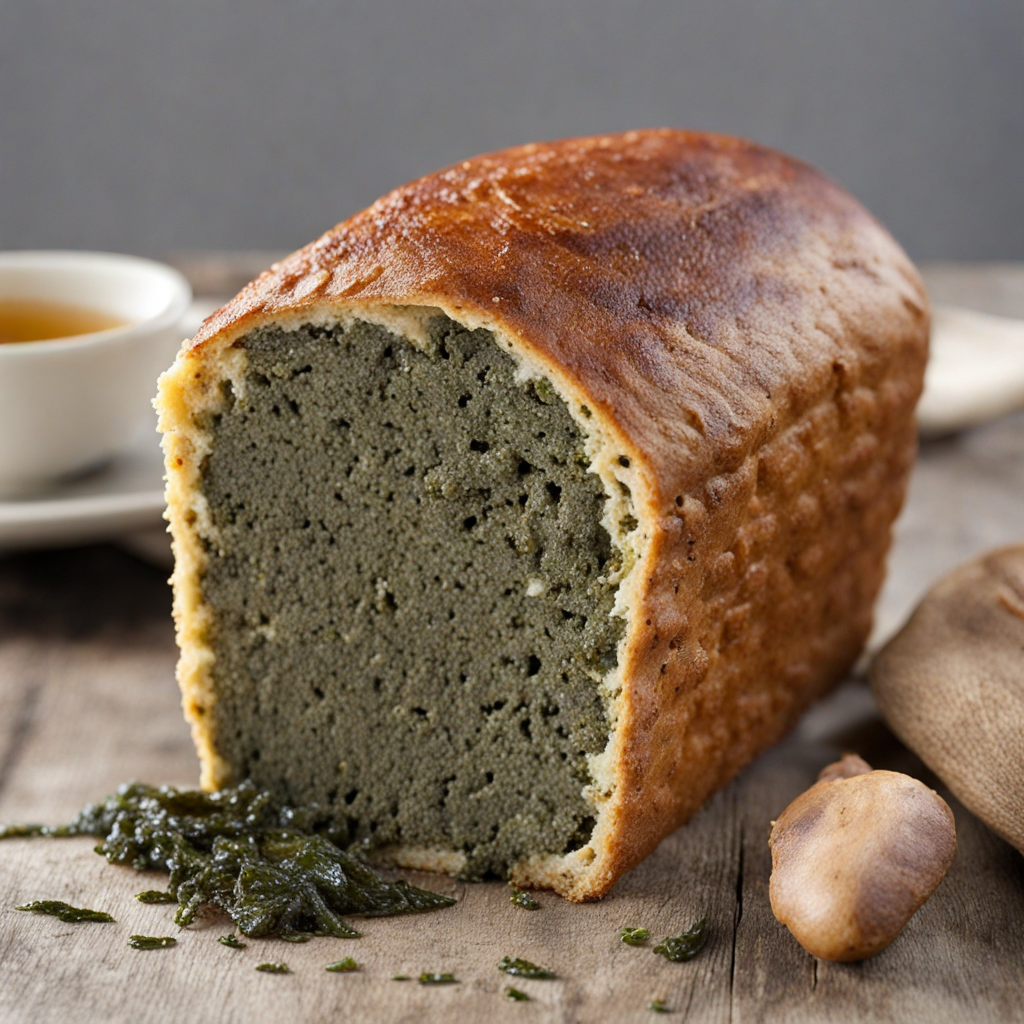Pease Pudding
Pease pudding is a traditional dish from the United Kingdom, primarily associated with the northern regions, particularly the North East of England. This humble dish is made from split yellow peas, which are boiled until soft and then mashed into a smooth, creamy consistency. The texture is thick and velvety, often compared to that of a dense porridge. It is seasoned simply with salt and may include a touch of pepper or herbs, allowing the natural flavor of the peas to shine through. The vibrant yellow color of the pudding is both inviting and indicative of its wholesome ingredients, making it a comfort food favorite for many. Typically served as a side dish, pease pudding is often paired with meats, particularly ham or bacon, where it complements the savory flavors of the protein. It can also be enjoyed spread on bread, creating a filling and nutritious sandwich. The dish is sometimes served alongside traditional British fare, such as a Sunday roast, adding a unique texture and flavor profile to the meal. Its versatility means that it can be enjoyed warm or at room temperature, making it an excellent option for picnics or casual gatherings. Pease pudding has a rich history that dates back centuries, making it not just a dish but a part of British culinary heritage. It embodies the spirit of frugality and resourcefulness, as it was originally created as a way to utilize leftover ingredients. Many families have their own variations of the recipe, sometimes adding onions, carrots, or even spices to elevate the flavor. For those looking to explore a taste of the UK, pease pudding offers a delightful experience that is both nostalgic and satisfying, inviting you to savor the simplicity of traditional British cooking.
How It Became This Dish
Pease Pudding: A Culinary Journey Through Time Pease pudding, a humble yet hearty dish, has a rich history rooted in the United Kingdom, particularly in the regions of the North East of England. This smooth, flavorful concoction made from split peas is not just a meal but a reflection of the agricultural practices, social customs, and culinary evolution of the British Isles. Origins: The Birth of Pease Pudding The origins of pease pudding can be traced back to ancient times. The word "pease" is derived from the Old English term "pise," which referred to the pea plant. Peas have been cultivated for thousands of years, with evidence of their consumption dating back to the Neolithic period. Archaeological findings suggest that peas were a staple food in the diets of early Europeans. By the Middle Ages, peas were commonly used in various dishes across Europe. However, the British Isles began to develop a distinct culinary identity, and by the 17th century, pease pudding emerged as a popular dish. The dish was particularly favored among the working classes because of its affordability and nutritional value. Made primarily from yellow or green split peas, the dish was often cooked with simple seasonings like salt and pepper, and sometimes flavored with herbs or bacon for added richness. Cultural Significance: A Dish of the People Pease pudding holds a distinctive place in British culinary tradition, especially in the North East of England. The dish is often associated with the region’s working-class heritage, where it was a staple for miners and laborers. Its preparation was straightforward; peas were soaked overnight, boiled until soft, and then mashed into a thick, smooth consistency. The dish could be served hot or allowed to cool and set, making it easy to slice and serve. The cultural significance of pease pudding extends beyond its role as a meal. It is often featured in folklore and local sayings. One notable rhyme is "Pease pudding hot, pease pudding cold, pease pudding in the pot, nine days old," which reflects the practicality of the dish and its ability to be enjoyed over time. This rhyme symbolizes the frugality and resourcefulness of the working class, who often had to make their food stretch. Additionally, pease pudding has strong ties to the culinary traditions of the United Kingdom. It is frequently served alongside other traditional dishes, most notably with bacon or as part of the iconic 'stottie cake' sandwich, whereby a thick slice of stottie bread is filled with pease pudding and slices of pork. This combination highlights the interplay between different food traditions in the region and emphasizes the importance of pease pudding as a communal food. Development Over Time: A Culinary Evolution As time progressed, pease pudding began to evolve. The Industrial Revolution in the 18th and 19th centuries marked a significant shift in food production and consumption patterns in Britain. As urban centers grew, traditional agricultural practices and foodways were disrupted, yet pease pudding remained a beloved dish. It was easy to prepare in large quantities, making it ideal for families and communities. The 20th century brought further changes to pease pudding. With the advent of processed foods and convenience products, pre-packaged versions of the dish began to appear on supermarket shelves. While these modern iterations often lack the artisanal qualities of home-cooked pease pudding, they have made the dish more accessible to a wider audience. Despite this, many still cherish the traditional methods of preparation, often passed down through generations. In the post-World War II era, Britain experienced a renewed interest in traditional foods, spurred by a desire to reconnect with culinary roots. Pease pudding found itself at the forefront of this movement, celebrated not only for its nostalgic value but also for its simplicity and wholesome ingredients. Cookbooks began to feature pease pudding recipes alongside other classic British dishes, further solidifying its place in the national culinary consciousness. Contemporary Pease Pudding: A Revival and Reinterpretation In recent years, there has been a notable revival of interest in traditional British foods, including pease pudding. The farm-to-table movement and the emphasis on local, sustainable ingredients have led many chefs and home cooks to explore the dish anew. Pease pudding is now being reimagined in innovative ways, often featuring contemporary flavor profiles and pairings. Modern chefs are experimenting with pease pudding by incorporating spices, herbs, and even unexpected ingredients like smoked paprika or truffle oil to elevate the dish. This creative reinterpretation has sparked a renewed interest among younger generations, who are eager to explore their culinary heritage while also embracing new flavors. Furthermore, pease pudding has found its way onto restaurant menus, often featured as a side dish or a unique component of a larger dish. For example, it is being served alongside gourmet sausages or as a base for grilled meats, showcasing its versatility and adaptability in modern cuisine. This resurgence in popularity is a testament to the enduring legacy of pease pudding, which continues to resonate with diners seeking comfort food with historical significance. Conclusion: A Dish with Heart Pease pudding is more than just a simple dish; it is a symbol of resilience and community. From its humble origins as a staple for the working class to its contemporary renaissance in fine dining, pease pudding has withstood the test of time. It embodies the spirit of British culinary tradition, reflecting the ways in which food can unite people, evoke memories, and celebrate cultural heritage. As the world of food continues to evolve, pease pudding stands as a reminder of the importance of tradition and the stories that food carries. Whether enjoyed in its classic form or through modern reinterpretations, pease pudding remains a beloved dish that connects generations and honors the rich tapestry of British culinary history. In every bowl or slice, it carries with it the weight of history, culture, and the simple joys of shared meals—a true testament to the heart of British cuisine.
You may like
Discover local flavors from United Kingdom


